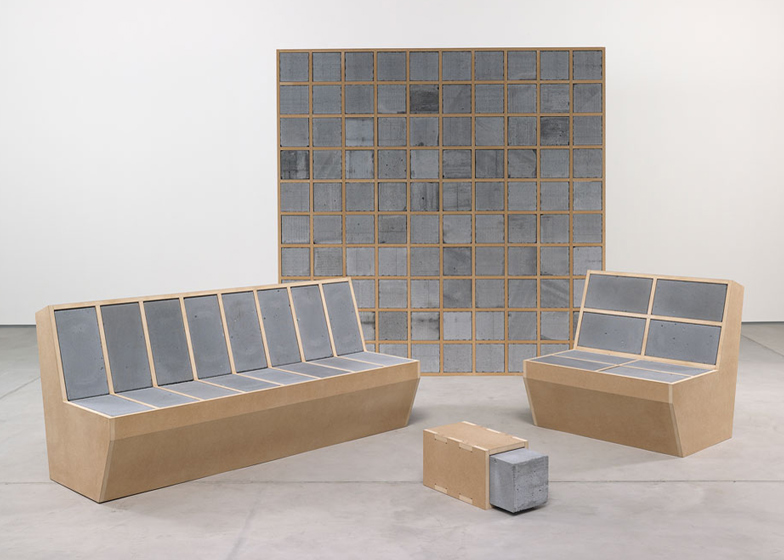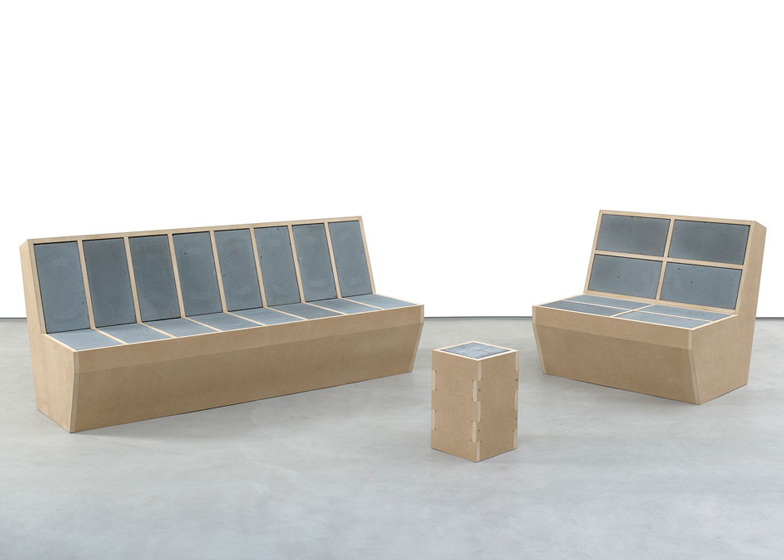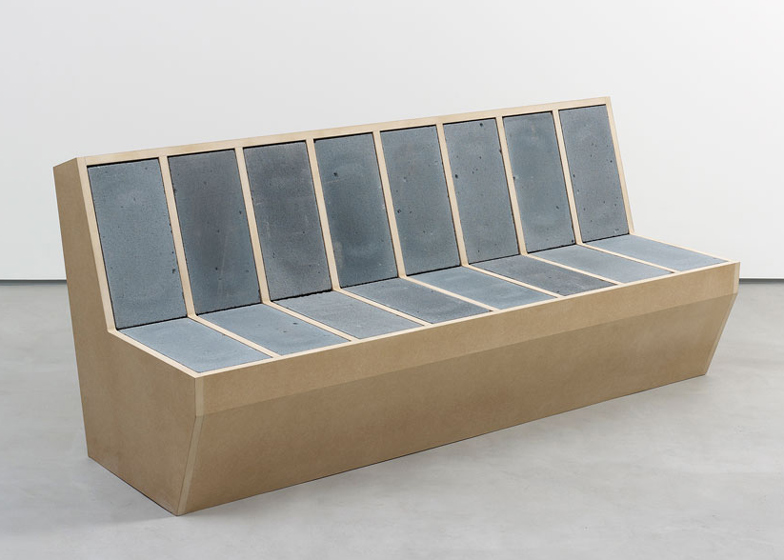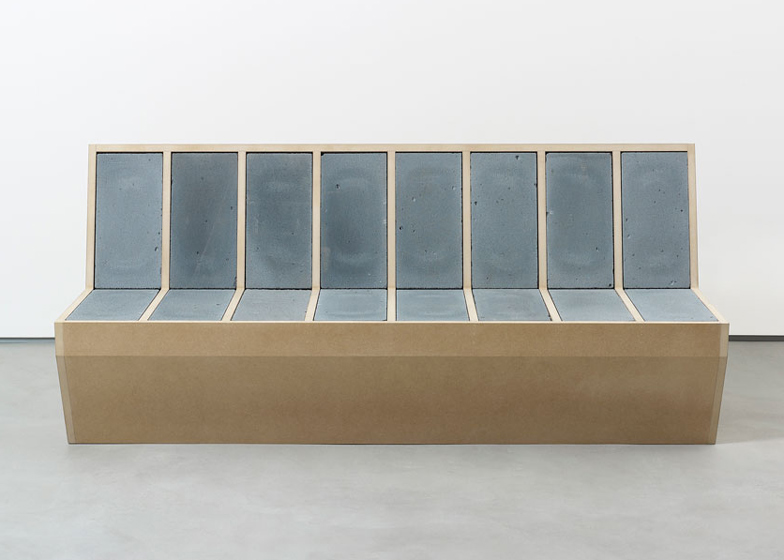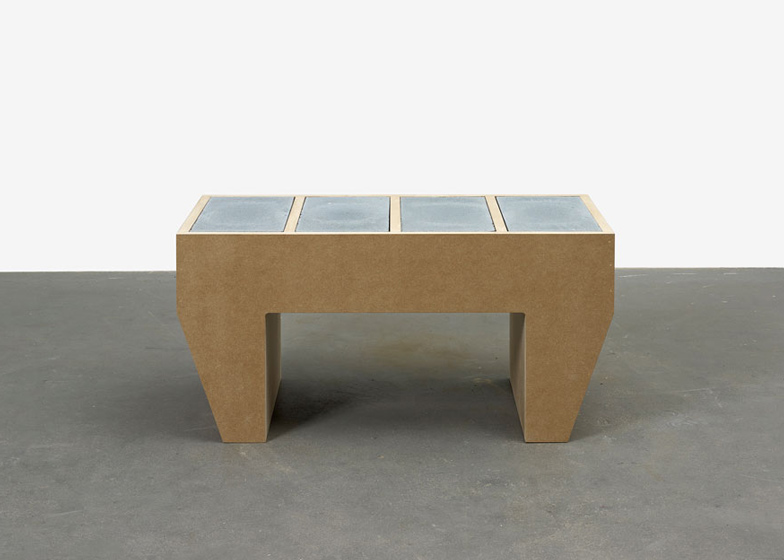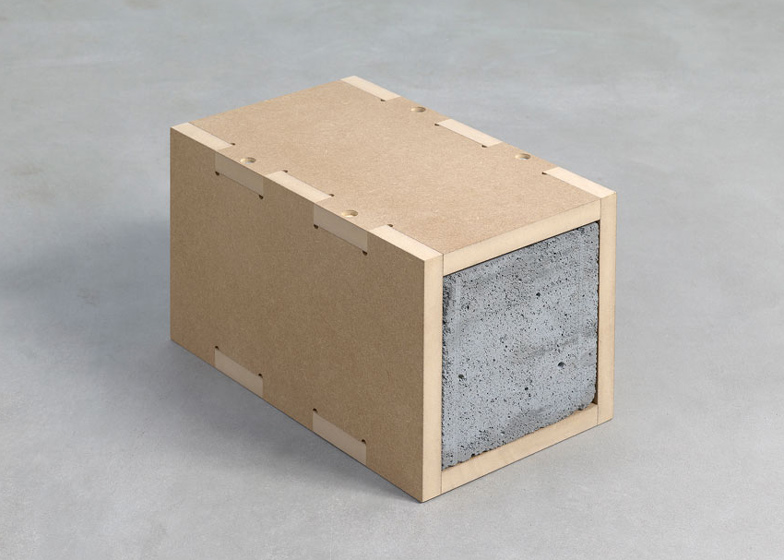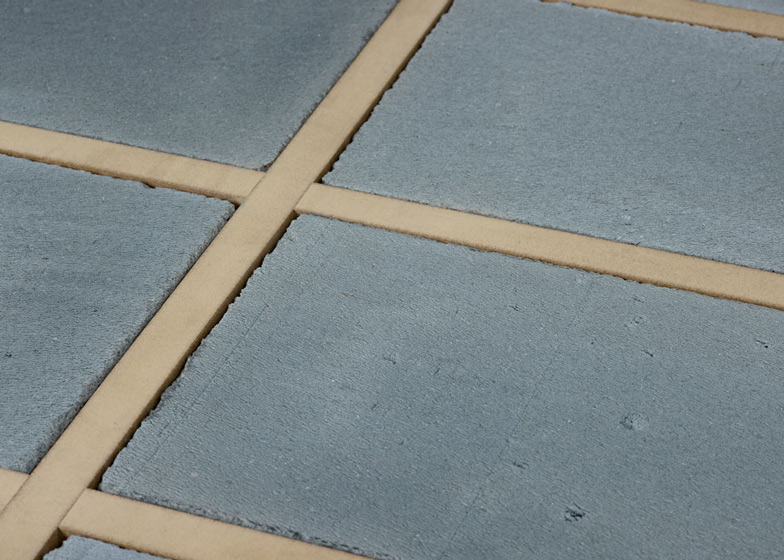Milan 2014: British artist Sarah Lucas presents her debut furniture collection, made from concrete blocks and MDF, in Milan tonight (+ slideshow).
The 14 limited-edition pieces have been created for the Sadie Coles gallery in London in collaboration with the London Art Workshop.
The range includes tables, chairs, benches, a desk, and a free-standing partition wall made from materials previously used as plinths and platforms to display Lucas' artwork. Each piece is numbered, stamped and signed by the artist.
The concrete breeze blocks used in the pieces are identically sized and have been embedded horizontally or vertically into the pale wooden frames, creating a grid-like appearance.
Lucas said she used the materials because they are "meaningful in terms of their uses in the outside world. They say a lot and are also low key, they don't overwhelm the sculptures."
The rough concrete and the smooth but sharp-edged MDF are in stark contrast to one another. Lucas said the result was "surprisingly stylish" and the texture and colour "both seem very real'".
The largest piece in the collection is the freestanding partition wall, a structure made from 10 by 10 concrete blocks that have been set in a uniform grid.
The smallest is a table made of just one block that can slide in and out of its frame.
Other pieces include a bench and chair, both of which Lucas intended as stand-alone pieces for a gallery.
The bench is made of 16 blocks set vertically in the MDF frame. It uses blocks for both the back and the seat and can seat four people. The chair consists of eight blocks set horizontally into the MDF.
The collection will be shown in a private view from 17.00 – 20.00 today at Via San Gregorio 43 / Via Casati 32 20124 Milano.
Here's some more information about the collection:
Sadie Coles HQ presents Sarah Lucas Furniture
From 8th to 12th April 2014, Sadie Coles HQ presents 14 limited edition, numbered, stamped and signed new furniture designs by the British artist Sarah Lucas, on display at the Salone Internazionale del Mobile di Milano. These limited editions – each numbered, stamped and signed – mark a dramatic new development in Lucas’s practice. Materials that previously acted as plinths and platforms for her artworks have been reconfigured into stand-alone pieces including tables, chairs, benches, a desk, and a freestanding partition wall.
Produced in collaboration with specialist fabricators the London Art Workshop, Sarah Lucas Furniture (2013) comprises mass-produced, basic construction materials – concrete breeze blocks and MDF – that have pervaded Lucas' art for several years. For each of the pieces, identically sized and exactingly arranged breeze blocks have been embedded into hard edged, minimalist MDF frameworks, creating a brutalist kind of inlay or 'intarsia', the antique practice of setting wood or stone within a surface.
Lucas describes the concrete and MDF materials as "surprisingly stylish", pinpointing their appeal through their "texture, colour – both of which seem very 'real'". To Lucas, using these versatile materials is "meaningful in terms of their uses in the outside world. They say a lot and are also low key, they don't overwhelm the sculptures."
In Lucas' furniture, concrete fulfils both a functional and aesthetic role, serving as durable readymade building blocks while investing the furniture with a uniform utilitarian appearance. Indeed the grid-like appearance of the breeze blocks in the objects call to mind the modular compositions of Minimalist artists such as Donald Judd and Carl Andre.
This can be witnessed especially in the monumentalism of the free standing wall from the series. Certain of the works have been specifically designed by Lucas as gallery furniture – as seats to be placed within a larger exhibition of the artist's work.
Sarah Lucas Furniture also echoes the artist's long-term use of furniture as anthropomorphic sculptural apparatus. Chairs especially have often featured in sculptures as stand-ins for the human body. In the series, Bunny (1997 - onwards), the chair was a key component of the work – stuffed tights clamped to chair legs implied splayed legs in an ambiguous expression of either sexual availability or vulnerability. One implication of this new body of work is that real human bodies have assumed the place, or status, of sculptures.
Overt and often comic literalism has long been a hallmark of Lucas' work, above all in her use of found real-life objects such as toilets, cigarettes and furniture. That literalist quality is extended in these functioning pieces: their radical blurring of art and life recalls earlier conflations of sculpture and useable furniture by artists such as Franz West, with whom Lucas collaborated on several occasions, and the American artist Scott Burton.

